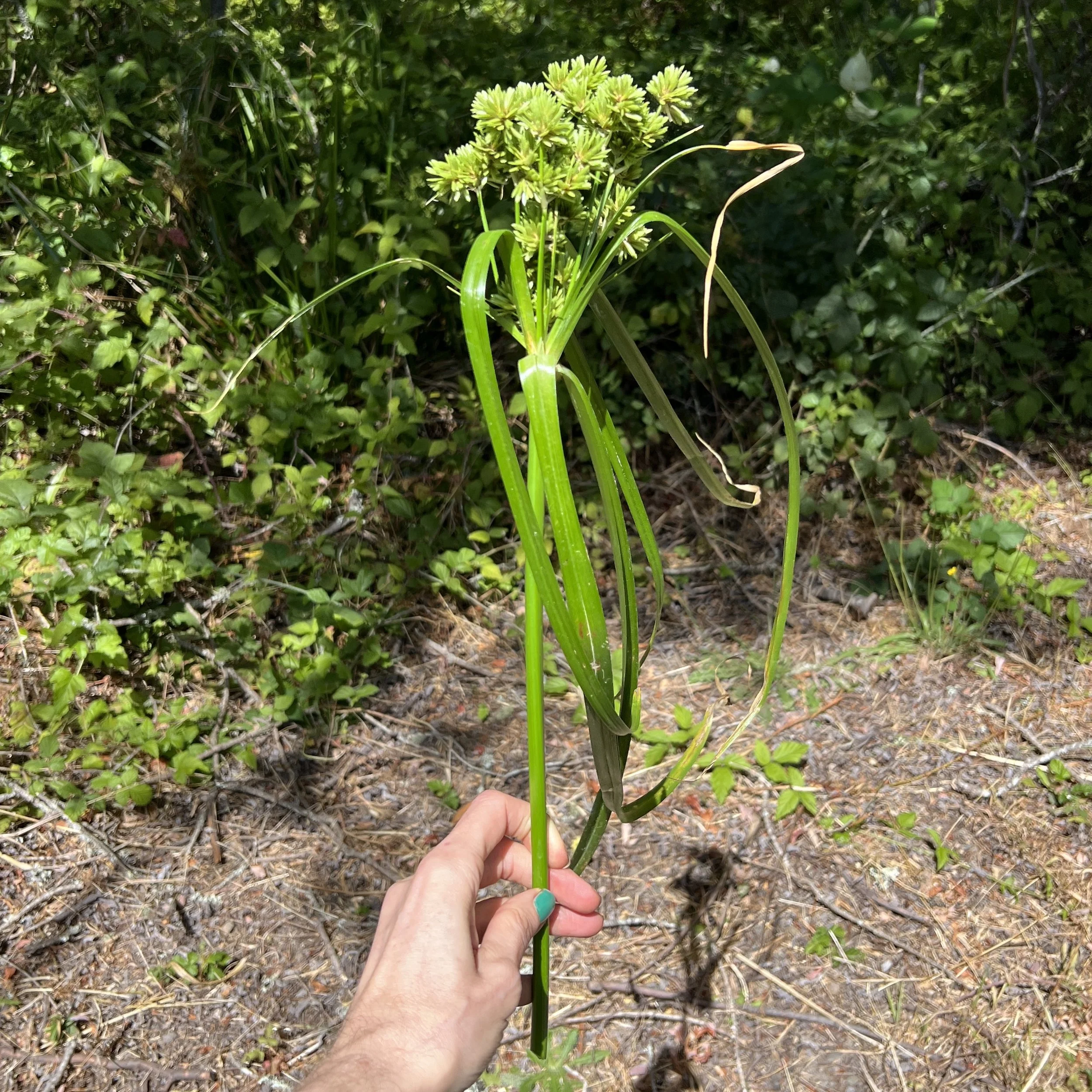Nutsedge(Tall Flatsedge) - Natural Dyeing
Nutsedge(Tall Flatsedge)-Cyperus eragrostis
Nutsedge is a California native, and one of those plants that completely surprised me when I put it into a dye pot. I’ve been battling it in our garden for over 10 years. It’s so invasive. However, last summer, I discovered that it yields dusty pinkish browns similar to those of mordanted fabric dyed with Giant Horsetail.
It’s a green sedge with tall, erect, triangular stems and long, thin, pointed leaves. Its flowers are found within tough, rounded, greenish-yellow or beige spikelets. Sedge leaves are thicker and stiffer than most grasses, are V-shaped in cross-section, and arranged in sets of three from the base rather than sets of two as found in grass leaves. In California, nutsedges are particularly problematic.
Purple nutsedge spikelets are dark reddish to purplish brown. Yellow nustsedge spikelets are straw-colored to gold-brown with many flowers. I used yellow nutsedge. I haven’t come across purple nutsedge yet. But I’m going to keep my eyes peeled.
Folk Magick: No documentation found.
Range: This species is originally native to the western United States, but it has become naturalized across North America, Europe, and parts of South America and Australia.
Growing Habitat: It is almost always found in wetland-riparian areas where it spreads rapidly.
Harvest Time: They tend to bloom in mid-June through August. The window for gathering may vary depending on the soil's moisture content and air temperature. I haven’t tried dyeing with them before they bloom.
DyeStuff: Flowering tops and stalks.
Fabric Samples are a mix of white and mixed linen, cotton, wool, and silk
Dyeing Instructions can be found in my book ‘The Natural Dye Handbook’. This is an affiliate link for bookshop.org. This means that if you purchase through my link, I may earn a small commission, at no extra cost to you.
More information is available to paid members on my Patreon. If you're interested in subscribing to my Patreon and supporting my exploration of natural dyes. My Patreon is mainly focused on slow stitching, but I’ve begun posting about four natural dye plants each month.
I’m teaching at Art Stays this September. If you are interested in exploring your landscape and foraging for plants that produce natural dyes and learning more about how different mordants effect color, this is the Natural Dye Retreat for you. There are other workshops happening at the same time so please check those out as well.
This is a particularly large flower. There is a small patch growing in the wild land near our garden. All the plants in the garden got brush cut earlier in the week. Next spring, when the ground is soft, I'll start digging it up again and try to eliminate as much of it as possible. It mainly reproduces from underground tubers, making it almost impossible to eradicate.


